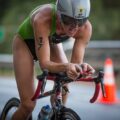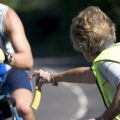Recovery Secrets: What Pro Triathletes Do Between Races

As a pro triathlete, the demanding nature of training and competing in races can take a toll on both your body and mind. What truly sets elite athletes apart is not just their physical prowess during races, but also their dedication to recovery and rejuvenation between those grueling events. In this blog post, we delve into the intriguing world of recovery secrets, uncovering what pro triathletes do between races to ensure they bounce back stronger and faster. From nutrition and hydration strategies to the importance of rest, sleep, and active recovery techniques, we will explore the holistic approach that these athletes take to optimise their performance and maintain peak conditions. Join us on this journey to discover the hidden practices and rituals that help pro triathletes stay at the top of their game.
Understanding the Importance of Recovery after Triathlon Races
Triathlon races push athletes to their limits, challenging their endurance, strength, and mental resilience. After crossing the finish line, the body and mind are in a state of fatigue and depletion. Understanding the significance of recovery is crucial for pro triathletes to maximise their performance in future races.
Recovery is allowing the body to repair and restore itself, replenishing energy stores, repairing damaged tissues, and reducing the risk of injury. It is during this period that the body adapts to the stress placed upon it during the race, leading to improvements in strength, endurance, and overall fitness. Failing to prioritise recovery can hinder progress, increase the risk of overtraining, and lead to burnout.
One key aspect of recovery is the reduction of inflammation. Triathlon races cause inflammation in the muscles and joints, leading to soreness and stiffness. Proper recovery techniques help reduce inflammation, allowing for faster healing and a quicker return to training.
Additionally, recovery plays a crucial role in preventing injuries. The repetitive nature of triathlon training and racing puts immense strain on the body, increasing the risk of overuse injuries. Adequate recovery allows for the repair of micro-tears in the muscles and connective tissues, reducing the likelihood of injuries and promoting long-term athletic longevity.
Moreover, recovery is not just physical; it is also mental. Triathlon races can be mentally draining, requiring intense focus and concentration. Giving the mind time to rest and recover is essential for maintaining mental clarity and motivation.
Understanding the importance of recovery after triathlon races is the first step towards optimising performance and achieving long-term success as a pro triathlete. In the following sections, we will explore the specific strategies and techniques that pro triathletes employ to enhance their recovery process and bounce back stronger for their next race.
Proper Nutrition and Hydration Between Races
Proper nutrition and hydration are fundamental aspects of recovery for pro triathletes. The foods they consume and the fluids they drink play a vital role in replenishing energy stores, repairing muscle damage, and promoting overall recovery. In this section, we will delve into the importance of nutrition and hydration between races and explore the specific strategies employed by pro triathletes.
Why Proper Nutrition is Essential for Recovery
Nutrition is the foundation of recovery, providing the body with the necessary nutrients to repair and rebuild. After a triathlon race, the body is in a state of depletion, with glycogen stores depleted, muscle fibres damaged, and electrolyte levels imbalanced. Proper nutrition helps replenish these stores, facilitates muscle repair, and supports optimal recovery.
What Foods and Drinks Pro Triathletes Consume for Recovery
Pro triathletes have a strategic approach to their post-race nutrition, focusing on consuming a combination of carbohydrates, proteins, and fats to restore energy levels, aid in muscle repair, and promote overall recovery. They prioritise nutrient-dense foods that are rich in vitamins, minerals, and antioxidants to support the healing process and reduce inflammation.
We will explore specific foods and drinks that pro triathletes include in their recovery regimens, such as lean proteins, whole grains, fruits and vegetables, healthy fats, and hydration strategies like electrolyte-rich fluids and recovery shakes.
Meal and Hydration Planning Tips
Planning meals and hydration between races is crucial for pro triathletes to ensure they are adequately fueling their bodies and optimising recovery. We will discuss meal timing, macronutrient ratios, and portion control strategies that pro triathletes employ to meet their specific nutritional needs during the recovery phase. Additionally, we will provide tips on hydrating effectively and maintaining electrolyte balance to support optimal recovery.
Proper nutrition and hydration are key components of a pro triathlete’s recovery routine. By understanding the importance of these factors and implementing the right strategies, athletes can enhance their recovery process, minimise downtime, and prepare their bodies for the next race with optimal performance potential.
Rest and Sleep’s Role in Recovery
Rest and sleep play a crucial role in the recovery process for pro triathletes. While physical exertion during races and training is necessary to build strength and endurance, it is during periods of rest and sleep that the body repairs and rejuvenates itself. In this section, we will explore the importance of adequate rest and sleep for recovery and delve into the strategies utilised by pro triathletes to optimise this aspect of their training regimen.
Why Adequate Rest and Sleep is Crucial
Rest is essential for allowing the body to recover and rebuild after the physical stress of triathlon races. It is during rest that muscle fibres repair and strengthen, energy stores replenish, and the immune system regenerates. Rest also helps reduce inflammation and protects against the risk of overuse injuries.
Sleep, on the other hand, is essential for both physical and mental recovery. During sleep, the body releases growth hormone, which aids in tissue repair and muscle growth. Sleep also plays a crucial role in cognitive function, memory consolidation, and hormonal regulation. Lack of sleep can hinder recovery, impair performance, and lead to a variety of health issues.
Pro Triathletes’ Sleep Habits and Routines
Pro triathletes prioritise quality sleep and establish consistent sleep habits to optimise their recovery. We will explore the sleep routines followed by these athletes, including establishing a regular sleep schedule, creating a sleep-friendly environment, and implementing relaxation techniques to promote better sleep quality. Additionally, we will discuss the importance of power naps and their role in facilitating recovery during intense training and racing periods.
Tips for Improving Sleep Quality
Optimising sleep quality is essential for pro triathletes to reap the benefits of restorative sleep. We will provide practical tips and strategies to improve sleep quality, such as creating a bedtime routine, managing the sleep environment, practising relaxation techniques, and incorporating sleep-enhancing practices like meditation and gentle stretching.
By understanding the crucial role of rest and sleep in the recovery process, pro triathletes can prioritise this aspect of their training regimen and ensure they are giving their bodies the necessary time and conditions to heal, rebuild, and prepare for future races.
Active Recovery Techniques Used by Pro Triathletes
Active recovery techniques are an integral part of a pro triathlete’s regimen to enhance the recovery process between races. These techniques involve engaging in low-intensity activities that promote blood flow, reduce muscle soreness, and aid in the removal of metabolic waste. In this section, we will explore the concept of active recovery, highlight common techniques used by pro triathletes, and provide guidance on how to incorporate them into your own routine.
The Concept of Active Recovery
Active recovery involves engaging in low-impact exercises and activities that promote circulation, increase oxygen flow to the muscles, and stimulate the removal of metabolic waste products. It helps to flush out lactic acid and other byproducts accumulated during intense training or racing, reducing muscle soreness and promoting faster recovery.
Common Active Recovery Techniques
Pro triathletes utilise a variety of active recovery techniques to aid in their post-race recovery. We will explore some of the most commonly used techniques, including:
- Easy Swim Sessions: Gentle swimming helps loosen up the muscles and provides a low-impact cardiovascular workout.
- Light Cycling: Cycling at a relaxed pace promotes blood flow, aids in muscle recovery, and can be done both indoors and outdoors.
- Active Stretching: Incorporating dynamic stretching exercises helps improve flexibility, and range of motion, and promotes blood circulation.
- Foam Rolling and Self-Myofascial Release: Using foam rollers or massage tools aids in releasing muscle tension, breaking up adhesions, and promoting recovery.
- Yoga and Pilates: These low-impact activities improve flexibility, core strength, and body awareness while promoting relaxation.
How to Incorporate Active Recovery into Your Routine
We will provide practical guidance on incorporating active recovery techniques into your own training routine. This includes scheduling dedicated active recovery sessions, integrating low-impact activities between intense training sessions, and customising the techniques to suit your individual needs and preferences. Additionally, we will discuss the importance of listening to your body and adjusting the intensity and duration of active recovery sessions accordingly.
By incorporating active recovery techniques into your routine, you can optimise the recovery process, reduce muscle soreness, and enhance overall performance as a triathlete.
Mental Recovery Strategies
Mental recovery is often overlooked but equally important for pro triathletes. The intense physical and mental demands of training and racing can take a toll on an athlete’s mental well-being. In this final section, we will explore the significance of mental recovery, discuss various strategies employed by pro triathletes, and provide insights on how to create a balanced and sustainable training mindset.
The Importance of Mental Recovery
Triathlon races require intense focus, mental resilience, and unwavering determination. Mental recovery is crucial for pro triathletes to maintain motivation, prevent burnout, and sustain their performance over the long term. It involves strategies and techniques to relax the mind, reduce stress, and enhance mental clarity.
Mindfulness and Relaxation Techniques
Pro triathletes utilise mindfulness and relaxation techniques to promote mental recovery. These techniques include meditation, deep breathing exercises, visualisation, and progressive muscle relaxation. We will explore how these practices help alleviate stress, improve focus, and enhance overall mental well-being.
Creating a Balanced and Sustainable Training Mindset
Maintaining a balanced and sustainable training mindset is essential for mental recovery. Pro triathletes understand the importance of rest days, setting realistic goals, and listening to their bodies. We will discuss strategies for finding a healthy balance between training and rest, setting realistic expectations, and fostering self-compassion.
Additionally, we will explore the benefits of incorporating hobbies, social connections, and other activities outside of triathlon into the athlete’s life. These activities provide a much-needed mental break, promote overall happiness, and contribute to a well-rounded and fulfilled life.
By prioritising mental recovery strategies, pro triathletes can build resilience, maintain motivation, and sustain their passion for the sport. Ultimately, a healthy and balanced mindset contributes to improved performance and overall well-being both on and off the racecourse.











